To stabilise or to mobilise? That is the question.
Mobility is very in vogue at the moment, especially in the CrossFit community. Kelly Starrett and his mobilitywod blog has seen an explosion of mobilisation/stretch techniques being used by the masses to improve their position and movement efficiency during training and competing. I absolutely love the mobilitywod resource; Kelly is a very smart man who isn’t afraid to share his secrets and bring some self help methods to the people. And historically, the manual therapists (insert: physio/chiro/osteo/massage) have kept their cards pretty close to their chests so this has been extremely refreshing to see.
The only problem I see with all this mobility work is when it is applied to the wrong situation. In most cases, when this occurs the person will just bash away at it for extended periods of time without any change. However, in some instances, it can actually do harm.
The thing that is really important to understand when looking at improving movement or position, is that mobility is different to flexibility, and stiffness is different to tightness. What do I mean by that? Well, flexibility is simply how elastic the soft tissues are in an isolated area e.g. length of hamstrings or gastrocnemius. Mobility, on the other hand, is a representation of how well that extensibility can be applied in a functional manner to produce full active range of movement. Muscle tightness or restricted length is basically shortened or contracted muscle tissue through repetitive poor positioning e.g. sitting at a desk all day. Stiffness, however, can be a protective mechanism employed by the body to limit movement in order to avoid damage or injury. Why would this occur? Most often as result of an unstable segment, joint or area.
The most common areas affected by this type of stiffness are the shoulder and the hip. For example; if you have trouble with overhead exercises or getting full range of abduction/flexion (read jerk or overhead press) the most common thing to blame are the shoulders, the lats, or for the discerning exerciser maybe pec minor. So, what happens next? You start smashing yourself with stretches, mobilisations, and self myofascial release work of course. You use the lacrosse ball and foam roller, you wind your arms into externally rotated overhead positions, and internally rotated behind the back positions…right? Then your shoulders feel great, well for about 30-45 minutes. Your overhead position test re-test is all good, you just need to do more of this and you will be fine, right? But what happens when you hit up the gym, box, or garage the next day for another training session, your overhead position sucks again, tight as always, so what do you do, stretch, mobilise blah blah, the cycle continues.
So here’s what else might be going on: if your scapula (shoulder blade) is not well stabilised by the appropriate musculature (insert: mid/lower trapezius, rhomboids, serratus anterior etc); when you raise you arm up overhead your shoulder blade is shifting around trying to find a stable position. In order to get the job done the bigger muscles acting on the shoulder ie. upper traps, deltoids and lats start to kick in to help out, and when that happens, your range gets restricted (stiffness) because the muscles that are meant to be doing the moving are locking down to help out with the stability issue. The same problem can be applied to just about any joint structure that has an inherent level of instability to allow movement.
Like I said at the outset, mobility is crucial and awesome and everyone should be doing it, regularly. But if you are in this rut of “I’ve being doing the mobility exercises for months and it still feels stiff”, then it’s time to look elsewhere.
Here is a simple test for your ability set the scapula and move your shoulder through range.
Reach Roll and Lift (test)
If you struggle to complete the movement above (ie. you could barely lift your hand off the floor or you had a big difference from left to right) then put your hand on a foam roller or other round object that you can raise your hand on and off and complete 10-20 repetitions as shown below. If you have one side that is worse than the other, complete twice as many reps on the worse side. Complete this once or twice a day, and right before you do any overhead work.
Reach Roll and Lift (corrective)
How does this work? It simply gets the scapular setting musculature (primarily mid trapezius) into a position where they are able to fire better, and therefore set the scap when you try to lift your hand off the floor (or overhead). Do this one for about a week and you shouldn’t need to do it any more as you mid traps etc. will be doing their job again.
I have seen wonders with this activation exercise for helping people who are ‘stiff’ overhead. Get the joint stable, and the range will improve. So in summary: If you suck at overhead work and mobility exercises are not working, try out this one.
Prescription: Complete 10-20 repetitions, 1 – 2 x daily. And do it right before you lift anything overhead or do any overhead loading (this includes handstand push ups/walks etc).
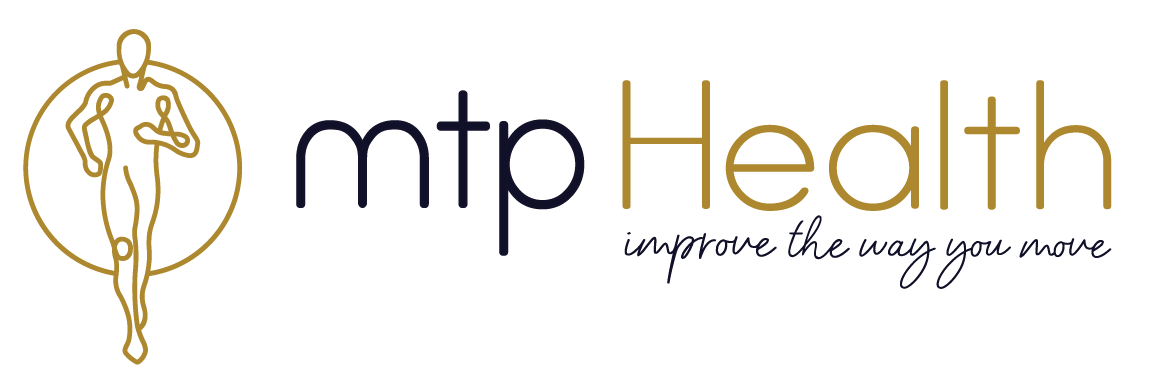


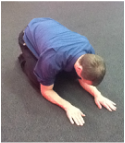
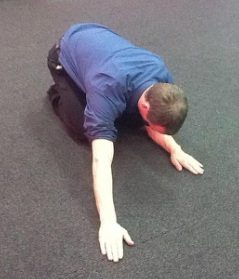
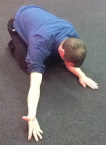
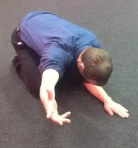
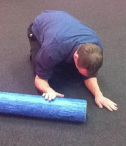
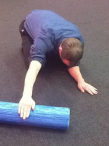
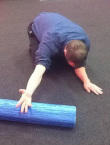
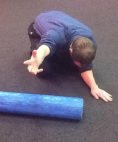
Awesome article Luke 🙂 very interesting! Thanks for sharing.
Totally agree Luke! This is something that I have been finding quite common with athletes in not only the shoulders but lower back/pelvis. Continually mobilizing without getting any results is definately a flag that something else is going on.